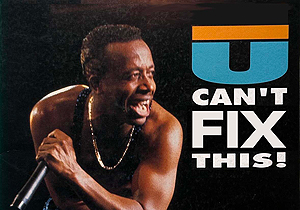Just as citizens vote on a 1% sales tax to fund transit in Hillsborough County, the county’s transit authority reported that its bus ridership is down 10.3% for the fiscal year that ended September 30th (FY2018).
The steep plunge calls into question the “need” or market demand for more transit, especially since more transit won’t reduce road congestion. County administrator Mike Merrill said so at a recent meeting. Also tax hike proponent Kevin Thurman of All For Transportation (AFT) admitted this fact when challenged.
One silver lining is that the agency’s “Mission MAX” plan has achieved its stated original goal of increasing ridership on its “high-demand routes.” Those core routes now have higher frequency, and the so-called “MetroRapid” traffic was up 80.6% as a result. However, that increase is swamped by the 18.6% decline in weekday ridership on the other routes, resulting in the overall bus ridership decline of 10.3%.
 The data is shown on the right and mirrors a nationwide trend of decline in transit ridership. Even in New York City, a bastion of subway ridership, in just one year the weekday subway ridership dropped 2.5% and weekend ridership dropped 9%. This decline prompted 60 Minutes to ask less than two weeks ago ” Why has the New York City subway gone off the rails?”
The data is shown on the right and mirrors a nationwide trend of decline in transit ridership. Even in New York City, a bastion of subway ridership, in just one year the weekday subway ridership dropped 2.5% and weekend ridership dropped 9%. This decline prompted 60 Minutes to ask less than two weeks ago ” Why has the New York City subway gone off the rails?”
Th reasons for transit’s decline are many. Apart from ride-sharing companies taking riders, an examination of public data shows that the supposed social, environmental, and economic development benefits of transit are negligible to nonexistent.
While streetcar ridership is up slightly for the year, it is largely due to promotions involving 25 cent rides and free rides. Tampa’s so-called TECO streetcar ranks 38 out of 39 of US light rail systems in both ridership and ridership per mile of system.
The 302,872 streetcar riders per year in FY2018 is far below the ridership levels projected when the line was promoted by then mayor Dick Greco. The line opened in 2002 and its first full year of operation, ridership was 420,000, dropping to 401,000 in FY2010. It is now 28% lower than in its first year of operation.
The Tampa TECO streetcar’s bad ridership trend line has arisen despite heavy marketing efforts, free rides and an approximately 35% increase in population in Hillsborough County since the line opened. Light rail ridership per system mile is also declining nationwide.
The data couldn’t have come at a worse time for the Jeff Vinik-backed AFT’s tax hike effort to fund transit. If there is no demand for more transit, if forcing people in to transit won’t reduce road congestion, and if transit isn’t green…then why would voters agree to tax themselves to pay for it?
As always….the Guardian reports and our readers decide. Like our Facebook page to find out when we publish new stories.



